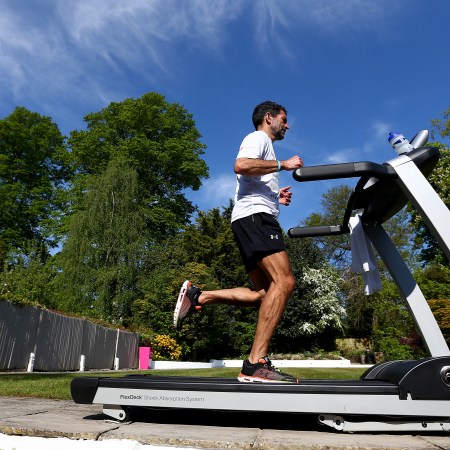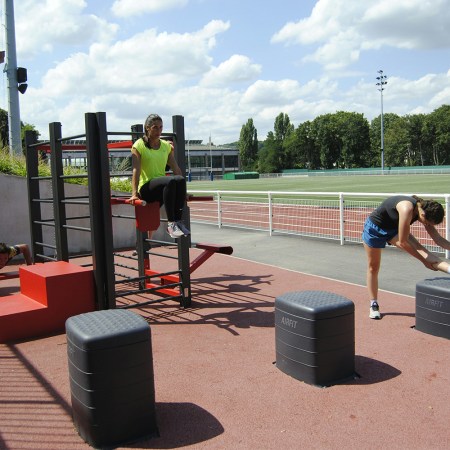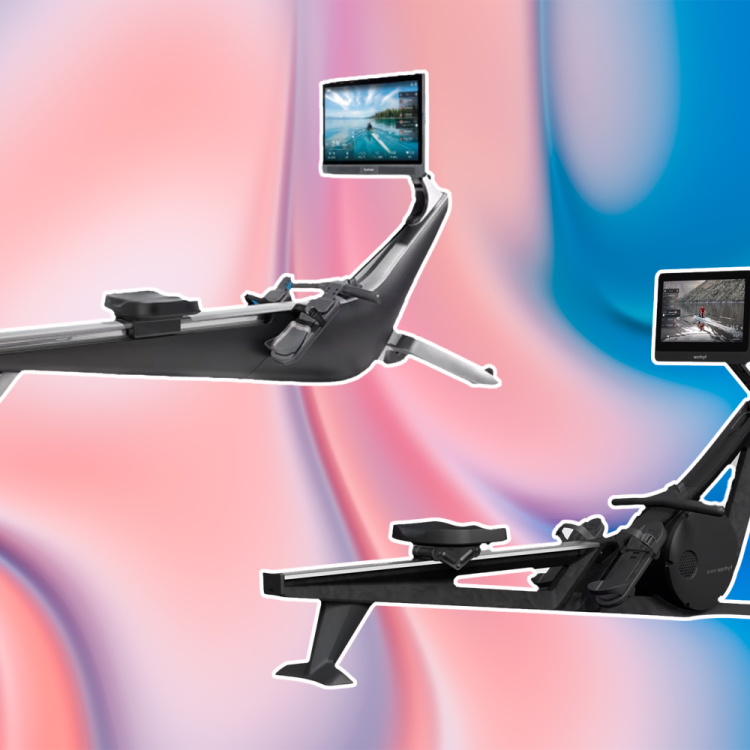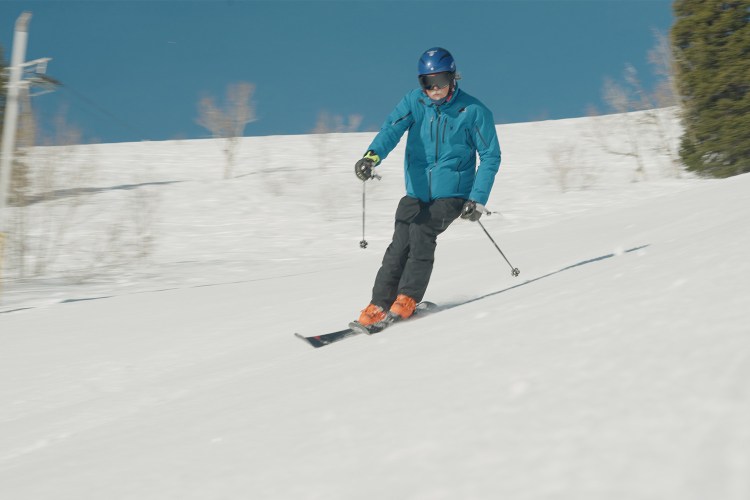I’ve never actually seen The Exorcist, but I’ve seen the film’s iconic staircase IRL countless times. The 75-step incline connects Northwest D.C.’s Prospect Street to M Street in Georgetown, where I went to school. I’d sometimes walk down the steps with friends to hit the gas station convenience store at the bottom, or set out for a walk along the Potomac River. Heading down was a real choice, though — the trip back up was no joke.
Which is why you would almost always see Hoya athletes of all stripes (rowers, soccer players, track athletes) chugging up those steps, training their legs and lungs at all hours of the day. You were guaranteed to see them in the early hours of the morning, when the staircase was at its emptiest (and spookiest, too).
Perhaps it sounds sort of obvious that athletes would take advantage of a steep incline for sprint intervals. But I think it’s especially telling that a well-furnished collegiate sports administration — which opened a $62 million fitness center while I was at school — still recognizes the potency of an 19th-century set of stone stairs.
I’ve been thinking about those steps recently, following a trip back to my old stomping grounds. They’re famous, but not completely unique. Chances are, you have a lengthy staircase near you that’s primed for workout potential. Below, we get into why an outdoor staircase is one of the most efficient ways to get lean and strong for the summer ahead.
It’s Time to Work Out With a Weighted Vest
We talk dos and don’ts, a brand to try and a challenging 30-minute circuitThe Staircase Difference
One of our main issues with that mainstream “10,000 steps” goal? Not all steps are created equal. And the steps you take up are way more valuable.
Regularly moving your body up flights of stairs —whether walking or running — will strengthen the muscles in your legs, improve mobility and balance, burn more calories than walking on a flat surface, and supercharge your cardiovascular fitness. According to research from Martin Gibala, Ph.D, a professor of kinesiology at Canada’s McMaster University, stair-climbing is one of the quickest ways to suss out “the underlying health of the cardiorespiratory system.” Gibala’s work illustrates the benefits of sprinting up stairs, in particular — just a minute of “all-out” movement (in a 10-minute workout) can you help you develop leg power and increase your VO2 max.
Three Different Workouts to Try
Stair Jogs
If you’re new to working out with a staircase, I’d recommend practicing the simple act of running on them before you start sprinting. Believe it or not, there are actual “tower runners” (who race locations like the Empire State Building). These pros have clearly defined cadences as they work their way up steps in order to stay safe and keep a sustainable pace.
Based on your stride length (and knee stability), determine if you’re able to skip a step as you jog up your staircase of choice. It’s an effective way to establish a more natural running form, which will keep the workout in an aerobic arena. There’s no need to push here — the mere fact that you’re running straight uphill is already going to elevate your heart rate and challenge your legs. Try jogging for time (15 minutes) or for repetitions (five times up and down).
The Sprint Ladder
At some point, if you want to tap into the benefits outlined by Gibala’s lab, you’ve got to haul ass up the stairs. A sprint ladder is your best bet. It’ll increase your explosiveness while burning lots of calories and protecting against injury (as this sort of workout is expressly designed to slowly ramp up the intensity).
For starters, I recommend getting a feel for the stairs with a light jog. Remove any loose rocks or sticks. Determine if the staircase is too steep — which is sometimes a possibility — for an eventual all-out sprint. From there, perform five rounds of effort: 50%, 60%, 70%, 80%, all-out sprint. This time around, you want to be striking every single step, not skipping any, and pumping your arms. Sprinting form. Go extremely light on the way back down, but try not to walk. You don’t want your muscles to tighten up, especially if it’s a chillier day.
3/20s
Finally, this is a creative adaptation to the sprint ladder, which involves bodyweight moves for more of a dynamic HIIT workout. It’s loosely based on a workout we learned from Paul Ronto, an adventure athlete who once biked from Canada to Mexico along the Pacific coastline.
Basically, you set your watch to 20 minutes. You run up the stairs as fast as you can, and at the top, do one of three exercises for 20 reps. Think: push-ups, burpees or air squats. Now, jog back down, in “active recovery mode,” before doing it again, this time doing the next of your three exercises. Obviously, mileage will vary based on how many stairs you’re tackling, but try to complete each exercise three times in the 20 minutes. Assuming you’re hitting those stairs hard, you’re going to be absolutely defeated by the end of this. But that’s what it takes to win summer.
Whether you’re looking to get into shape, or just get out of a funk, The Charge has got you covered. Sign up for our new wellness newsletter today.



















